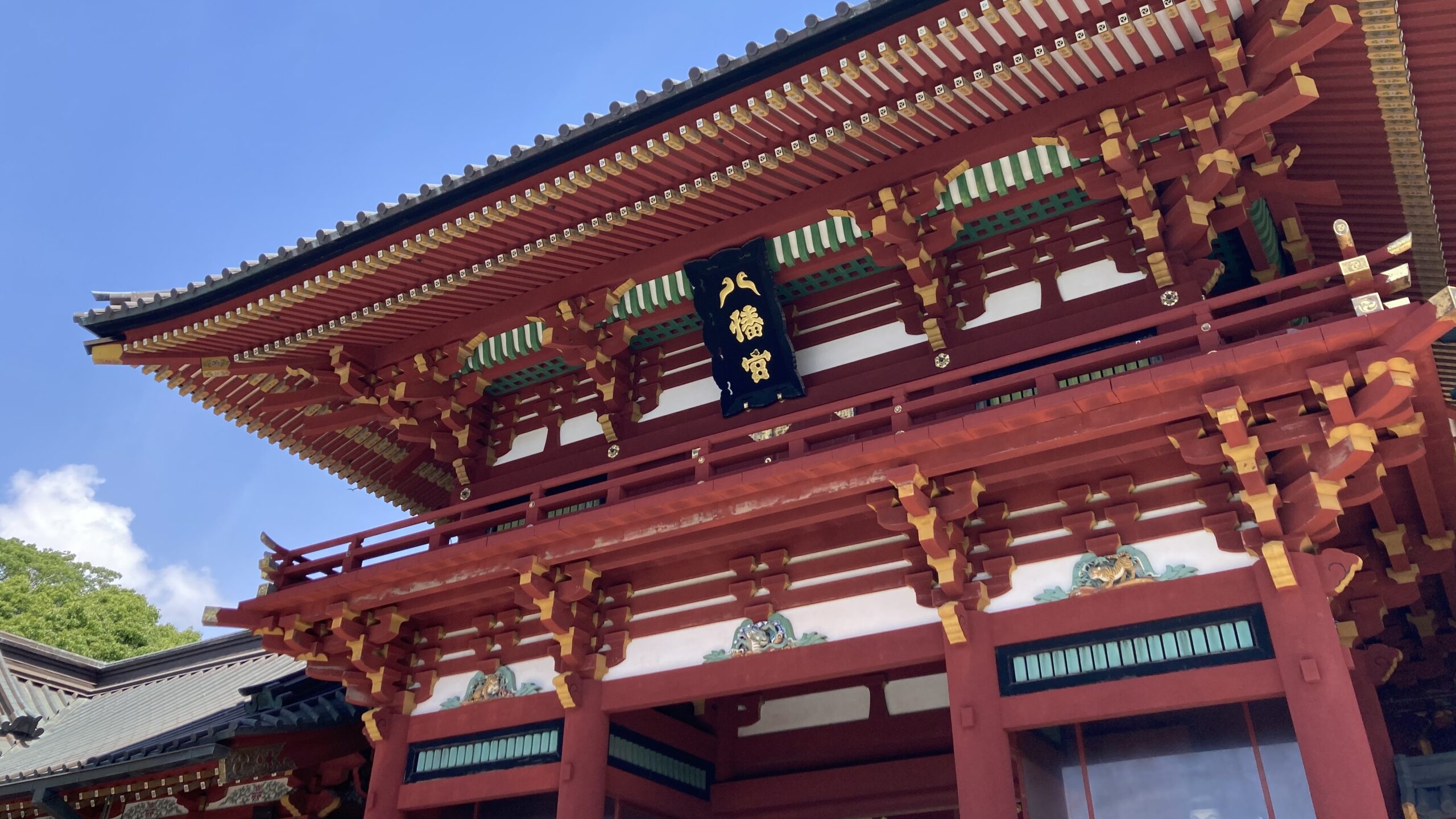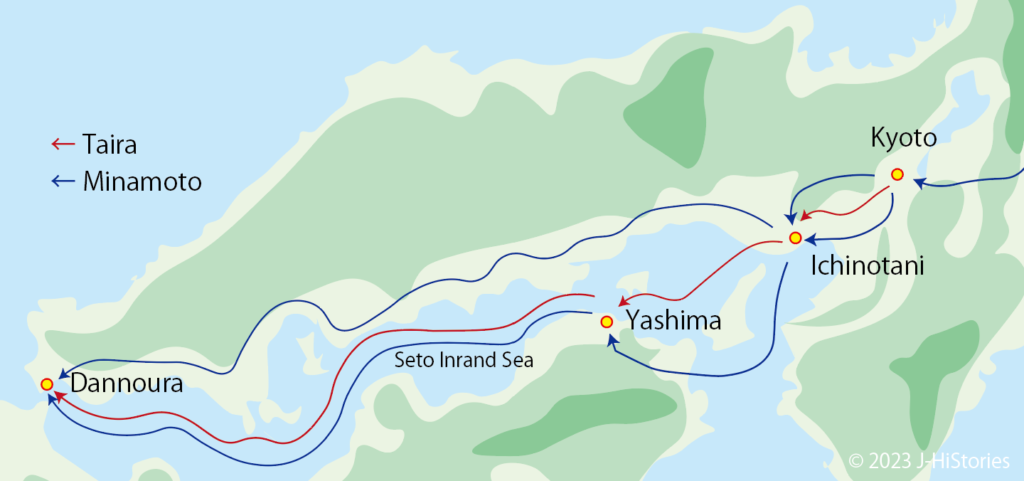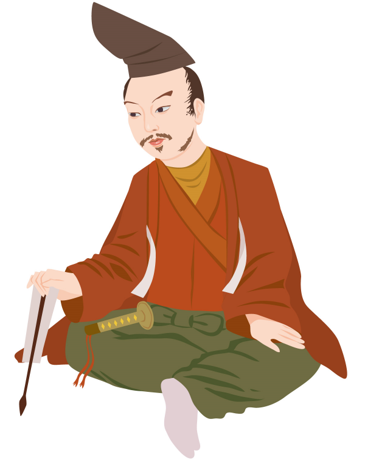Tsurugaoka Hachimangu Shrine in Kamakura, The Birthplace of The Samurai Government
Tsurugaoka Hachimangu Shrine in Kamakura was a cornerstone for the samurai, Minamoto Yoritomo, and his retainers in establishing the first Samurai government in Japan. Until then, the samurai’s mission was to protect the emperors by force, acting as a kind of police unit called Kebiishi. Yoritomo and his retainers aimed to establish "Government of the Samurai, by the Samurai, for the Samurai." Its ruling structure was based on the direct ties of favor and service between Yoritomo and his retainers. The favor means honryo-ando (Yoritomo acknowledged the inherited estate), and the service means hou-kou (retainers' giving their lives to fight for Yoritomo).
Yoritomo's success in establishing the first Samurai government depends on three major aspects: (1) A legitimate lineage of the Seiwa Genji clan connected to Emperor Seiwa, (2) Independence from Kyoto (the Imperial Court politics), and (3) His cool-headed political ability with his brother, a military genius, Yoshitsune.

Rose An Army in front of Hachiman Deity of War

Minamoto Yoritomo (1147-1199, 源頼朝) established Tsurugaoka Hachimangu Shrine (鶴岡八幡宮) as the center of Kamakura in 1180. He gathered his samurai retainers and prayed for victory in the upcoming battles against their traditional rivals, the Taira clan, to the Hachiman deity of fighting, archery, and victory. After shouting at the top of his voice, he raised an army at the age of 33. This was after he had spent two decades in exile in Izu province, far away from the capital, Kyoto.
20 Years of Exile in Izu Province
Twenty years prior, in 1160, Yoritomo's father, Yoshitomo (1123-1160, 源義朝), was defeated and killed in the Heiji rebellion by the general, Taira Kiyomori (1118-1181, 平清盛). Yoritomo was immediately exiled to the Izu province at the age of 13, while his brother, Minamoto Yoshitsune (1159-1189, 源義経), was fostered out to Kuramadera temple in Kyoto at the age of 7. All the while, Kiyomori wielded a lot of control over the emperor’s political scene through his (1) economic power built up with the trade between Japan and Sung, (2) military power, and (3) marriage to the Imperial family.
An Imperial Degree to Defeat The Taira Clan
Due to increasing dissatisfaction with the overwhelming power of the Taira clan's tyranny, Prince Mochihito, the son of the cloistered Emperor Go-Shirakawa (1127-1192, 後白河上皇), issued a decree in 1180 ordering the Minamoto clan across the country to defeat the Taira clan in response to their outrage over imprisoning Go-Shirakawa. Accordingly, Yoritomo's revolt against the Tira clan, Yoshitsune decided to make his way to Kamakura to join Yoritomo’s army. Yoshitsune’s Samurai skills acquired through rigorous training in the wooded Kuramadera's mountain region contributed to the victory of three key battles: Ichinotani, Yashima, and Dan-no-Ura.

The Victory of The Battle of Dan-no-Ura
Dan-no-Ura Cove was the staging place for the final battle held on May 2nd, 1185. At the beginning of the battle, the Taira navy rode a rapid tidal current, raining arrows down on the enemy. This enabled them to push Yoshitsune’s army back. However, Yoshitsune gained the upper hand over Taira once the tide changed. Many of the Taira family found themselves at a standstill and began throwing themselves into the sea. Nii-no-Ama, Kioyomori’s wife, clutched her grandson, the 81st Emperor Antoku (1178-1185, 安徳天皇), who was only 3 years old, and drowned themselves off the boat with the sword of one of the Imperial Regalia in her hand. The supreme commander of Taira Munemori, Kiyomori's son, was captured. At this point, the Taira clan ended.
A Severe Politician, Yoritomo, Subdued His Brother, Yoshitsune
Yoshitsune's glorious return to Kyoto and appointment to Kebiishi by Go-Shirakawa without Yoritomo’s permission was a cause of friction between him and Yoritomo. This was because the ruling structure in Kamakura was based on the direct ties of favor and service between Yoritomo and his retainers. Despite being his brother, Yoritomo had positioned Yoshitsune as his retainer and could not allow him to threaten the new order being created in the eastern provinces. This led to a feud between the brothers. Yoshitsune fled to Hiraizumi, counting on the Oshu Fujiwara clan, where he had previously lived. Once Yoritomo heard that Yoshitsune had reached Hiraizumi, he forced the Fujiwara clan to give Yoshitsune up. Fujiwara relented to pressure from Yoritomo’s repeated stern demands and issued the order to put down Yoshitsune. But, Yoshitsune refused to fight against the Fujiwara clan he was deeply indebted; instead, he hid in the Jibutsudo Buddhist hall and killed himself after reading the sutras in 1188. He was 31 years old. After this, Yoritomo sent troops to Hiraizumi and destroyed the Oshu Fujiwara clan. Thus, Yoritomo gained control over the eastern part of Japan.
The Foundation of The Samurai World, Favor and Service

Shortly after, Yoritomo went to Kyoto and was appointed Ukone no Daisho (the highest military officer rank) by Go-Shirakawa. In 1992, he was appointed Seii Taishogun (Great General), becoming the top of the Samurai both in name and reality. Kamakura, the first city of the Samurai government in Japan, was built by Yoritomo, though its area mainly covered the eastern part of Japan. It was a turning point in history. The fundamental policy was based on a reciprocal “favor and service” relationship between Yoritomo, or Shogun, and his retainers. Yoritomo guaranteed ownership of the retainer’s estates, which were important next to their lives. In return, they provided military services to Yoritomo whenever necessary. This governing system continued until the late 16th century when the most powerful military lord in Japanese history, Oda Nobunaga (1534-1582, 織田信長), was about to become the ruler of Japan.
Yoshitsune Was The God of War, vs Yoritomo Was A Hard-headed Politician
Experience the spirit of the Samurai by taking a walk in Kamakura and visiting the prominent landmark and Kamakura Shogunate’s anchorage, Tsurugaoka Hachimangu Shrine, while contemplating the high-quality leadership of Yoritomo. His success in establishing the first Samurai Shogunate depended on his cool-headed decision and his younger brother, Yoshitsune’s military genius, and his leadership to manage a diverse group of Samurai in eastern Japan through the newly created master-servant relationship as well. Yoritomo was based in Kamakura, far from Kyoto, the political center of Japan, and thus avoided any interference from Imperial Court politics. Another reason to visit in the spring is the stunning cherry blossoms in full bloom along the street from Kamakura station to the gate of Tsurugaoka Hachimangu Shrine.
Minamoto Yoritomo & Yoshitsune Timeline
| 1147 | Yoritomo was born | Yoritomo Age=1 | Heian Period |
| 1156 | Hogen war | 10 | |
| 1159 | Yositsune was born | Yositsune *Age=1 | |
| 1159 | Heiji war | 13 | |
| 1160 | Yoritomo was exiled to Izu | 14 | |
| 1167 | Taira Kiyomori became Grand Minister of State | 21 | |
| 1169 | Yoshitsune was placed in the care of the monks of Kurama temple | *11 | |
| 1174 | Yositune left Kramadera Temple and moved to Hiraizumi | *16 | |
| 1180 | Kiyomori's rival, Yoritomo raised an army to attack Kiyomori & his family | 34/*22 | |
| 1181 | Kiyomori died of deceases | 35 | |
| 1185 | Heike fell at the Dannoura War | 39/*27 | |
| 1185 | Minamoto Yoritomo established Kamakura Shogunate | 46 | Kamakura Period |
| 1189 | Yoshitsune died | 43/*31 | |
| 1199 | Yoritomo passed away | 53 | |
| 1333 | The fall of Kamakura Shogunate | - | Northern and Southern Courts |
Recommendations to visit
- Access: 1 hour from Tokyo Station to Kamakura Station on the JR Yokosuka Line bound for Kurihama. A 10-minute walk.


